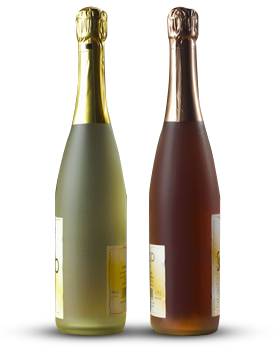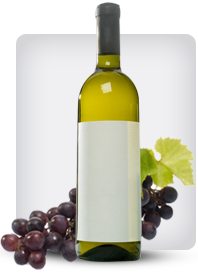

Tag: Value
Best Australian Shiraz Under $35: Exceptional Value from Down Under Australian Shiraz has earned a global reputation for its bold, fruit-forward character and remarkable consistency
Posted onWhile premium bottles can command hundreds of dollars, some of the most enjoyable and authentic expressions of this iconic grape are available for less than . Whether you’re a seasoned enthusiast or a curious newcomer, this price bracket offers outstanding quality and typicity. Here are some of the best Australian Shiraz wines that deliver incredible value without compromising on character.
What Makes Australian Shiraz Special?
Shiraz (known as Syrah elsewhere in the world) found a perfect home in Australia’s diverse climates and ancient soils. The style is generally known for its ripe, dark fruit flavors—think blackberry, plum, and blueberry—complemented by notes of chocolate, black pepper, and sweet spice. Australian Shiraz is typically approachable in its youth, with smooth tannins and a generous palate that pairs wonderfully with a wide range of foods, from grilled meats to hearty pasta dishes.
Top Picks for Australian Shiraz Under
1. Penfolds Koonunga Hill Shiraz
A household name in Australian wine, Penfolds’ entry-level offering is a masterclass in consistency and value. Sourced from multiple South Australian regions, it delivers classic Shiraz character with dark fruit, a hint of mocha, and a soft, rounded finish. It’s a reliable crowd-pleaser and a fantastic introduction to the Penfolds style.
2. d’Arenberg The Footbolt Shiraz
From McLaren Vale, a region famous for rich, textured Shiraz, The Footbolt is a standout. It offers a burst of ripe blueberries and black cherries, with underlying notes of licorice and spice. The palate is full and generous, with fine tannins making it both drinkable now and capable of short-term cellaring.
3. Jim Barry The Lodge Hill Shiraz
Hailing from the Clare Valley, this Shiraz presents a slightly more elegant and peppery profile compared to its South Australian counterparts. Expect vibrant red and black fruit, a distinctive white pepper note, and a fresh, balanced acidity. It’s an excellent choice for those who appreciate a Shiraz with structure and lift.
4. Tahbilk Shiraz
One of the oldest family-owned wineries in Victoria, Tahbilk produces a stunningly value-packed Shiraz from its Nagambie Lakes vineyards. This wine is a testament to classic, medium-bodied cool-climate Shiraz, with red berry fruits, earthy undertones, and a savory, spicy finish. Its authenticity is undeniable.
5. Grant Burge Hillcot Merlot Shiraz
While a blend, this Barossa Valley wine is dominated by Shiraz and showcases the region’s opulent style. It’s plush and velvety, with layers of dark fruit, vanilla, and soft spice. Exceptionally smooth and approachable, it’s perfect for immediate enjoyment.
6. Yalumba Y Series Shiraz
From Australia’s oldest family-owned winery, this South Australian Shiraz is organic and vegan-friendly. It’s a vibrant, fruit-driven wine with juicy plum and blackberry flavors, a touch of violet, and soft, supple tannins. It represents modern, drink-now Australian Shiraz at its best.
Tips for Finding Great Value
* Explore Regions: While the Barossa Valley and McLaren Vale are famous for powerful Shiraz, don’t overlook the Clare Valley (for elegance), Heathcote (for spice), or the Hunter Valley (for earthy, medium-bodied styles).
* Vintage Variation: Australian Shiraz is generally consistent, but checking a quick vintage chart can help you find years with optimal balance, especially in warmer regions.
* Trustworthy Producers: Wineries like those listed above have built their reputations on quality across all price points. Their entry-level wines are often made with the same care as their icons.
Conclusion
You don’t need to spend a fortune to experience the joy of Australian Shiraz. The sub- category is rich with wines that authentically express their region and grape variety, offering depth, flavor, and immense drinkability. From the bold and generous styles of South Australia to the peppery and refined examples from cooler climates, there’s a world of discovery waiting in this accessible price range. Open a bottle, pour a glass, and enjoy the sunshine of Australia in every sip.
Best Value Cabernet Sauvignon from Chile
Posted onChile has long been celebrated for producing high-quality, affordable wines, and its Cabernet Sauvignon is no exception. With ideal growing conditions—sun-drenched valleys, cooling Pacific breezes, and mineral-rich soils—Chilean winemakers craft bold, fruit-forward Cabernets that rival more expensive counterparts from Napa and Bordeaux. Here, we explore some of the best value Cabernet Sauvignon bottles Chile has to offer.
Why Chilean Cabernet Sauvignon?
Chile’s unique geography provides a perfect environment for growing Cabernet Sauvignon. The Andes Mountains shield vineyards from extreme weather, while the coastal influence ensures balanced acidity. Additionally, Chile’s old vines and sustainable farming practices contribute to exceptional quality at accessible prices.
Top Picks for Best Value
1. Concha y Toro “Casillero del Diablo” Cabernet Sauvignon
One of Chile’s most iconic wines, Casillero del Diablo delivers rich dark fruit flavors, hints of spice, and velvety tannins. Priced under , it’s a steal for its consistent quality and depth.
2. Santa Rita “120” Cabernet Sauvignon
Named after the 120 patriots who sought refuge at Santa Rita’s winery during Chile’s independence, this wine offers blackcurrant, tobacco, and a smooth finish—all for around .
3. Montes Classic Series Cabernet Sauvignon
A step up in complexity, Montes Classic features ripe plum, dark chocolate, and a touch of oak. At under , it’s an outstanding mid-range option.
4. Undurraga “Terroir Hunter” Cabernet Sauvignon
Sourced from the Maipo Valley, this wine showcases concentrated blackberry, graphite, and firm structure. Priced around , it’s a fantastic representation of single-terroir Chilean Cabernet.
Food Pairings
Chilean Cabernet Sauvignon pairs beautifully with grilled meats, hearty stews, and aged cheeses. Its bold fruit and balanced acidity also complement dishes like lamb chops, mushroom risotto, or dark chocolate desserts.
Final Thoughts
For wine lovers seeking exceptional quality without the premium price tag, Chile’s Cabernet Sauvignon is a must-try. Whether you opt for an everyday bottle like Santa Rita “120” or a more nuanced pick like Undurraga “Terroir Hunter,” you’ll enjoy world-class flavors at a fraction of the cost.
Explore these selections and discover why Chile remains a top destination for value-driven Cabernet Sauvignon.
The Value of Kosher Wine Aeration
Posted onAs a true wine lover, I do not just love to drink it. I love the process of winemaking, I love the decisions a vintner makes to perfectly blend or age a superior wine. I also love the rating system discussions since there is so much room for subjectivity. One genre of wine that often gets ignored is that of kosher winemaking. It is a process of steps that are essential for Judaism, and I have recently learned the value of Kosher wine aeration. Prior to utilizing my Wine areator on the Palwin No. 10 that was purchased, I familiarized myself with the steps of the kosher winemaking.
Like the majority of kosher products, it must receive a seal of approval to receive the label “kosher.” While the winemaking process rarely uses any of the forbidden foods in the typical fermenting and bottling process, there is an element that makes this product different from all others. Kosher wine is actually cooked or boiled, as this is considered to make it unfit for pouring to or for an idol. This follows the laws of Judaism and will keep the kosher status if it is subsequently touched by a an idolater(someone who worships to an idol.)
I have found this process very interesting as kosher wine has a very different taste and bouquet than regular wine. This cooking process also gives the need for aeration in order to bring out the most flavor, and maximize the value of your purchase.
When sniffed my very first pour of kosher wine, I noticed the smell was not quite as vibrant as the Pinots and Cabernets I typically drink. The flavor itself seemed stale, and I knew immediately the wine should be exposed to as much oxygen as possible. Utilizing a decanter seemed in order to make sure there was consistency and a breakup of accrued sediment, but I did not have one available.
The process of exposing the wine to oxygen, also know as letting a wine breathe, is greatly increased when using a decanter or wine aerator as the surface area of the wine is maximized. Since my trusty Wine aerator was on hand, it was used for two separate pours into separate wine glasses.
To make sure I was increasing the surface area of the kosher wine as much as possible I utilized the largest wine glasses available. The shape and volume of the glass allowed for efficient swirling, and increased the oxygen appropriately following the wine aeration.
The bouquet of each glass of wine changed dramatically. Each glass of wine smelled fantastic, and the aroma smelled much more of fruit, as it should. The most dramatic change was in the flavor of the wine, as it went from stale to beautifully aromatic. This was only after a minute of breathing following aeration.
While I may have other wines I would prefer to drink over kosher wine, the aeration with the Wine Weaver proved valuable and certainly brought out the most out of my bottle of kosher wine. If your drink kosher wine at family functions, make sure you bring your wine aerator because everyone will thank you.
popular posts
-

Aging Potential of Premium Pinot Noir: Unlocking the Elegance of Time Among the world’s noble grape varieties, Pinot Noir holds a unique and almost mythical status
12-30 2025Celebrated for its ethereal aromatics, silky texture, and captivating expression of *terroir*, it is often considered the most transparent conduit from vineyard to glass. Read More
-

Food Pairing with Full-Bodied Cabernet Sauvignon Few wines command a table with the authority of a full-bodied Cabernet Sauvignon
12-29 2025With its deep, inky color and powerful structure built on robust tannins, dark fruit flavors, and often a hint of oak, it’s a wine Read More

